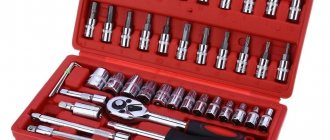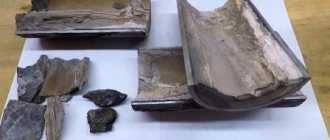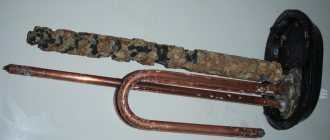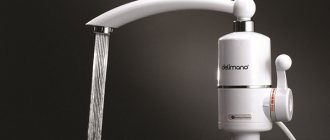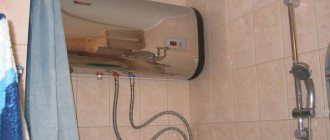It is a known fact that the quality of water in domestic water supply systems leaves much to be desired. Therefore, electrical household appliances in contact with hard water suffer from deposits of magnesium, calcium and lime salts. This problem is inherent in all water heaters. How to descale a heating element?
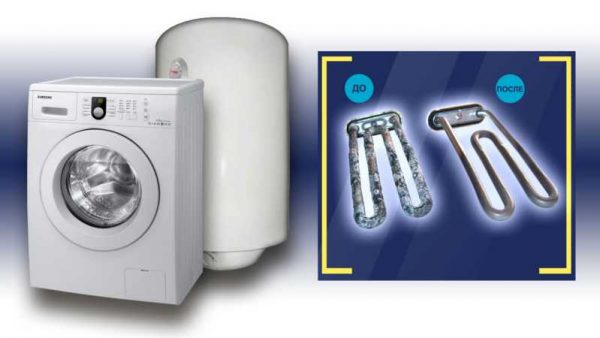
Limescale is a lime-salt deposit on the heating element, the inner walls of the boiler tank. It is formed in the course of long-term, intensive use of the device. The hard lime layer has a low thermal conductivity. For this reason, energy consumption and water heating time increase. The efficiency of the water heater is reduced. Due to constant overheating, it fails.
Competently cleaning the heating element of the boiler, you can significantly extend its service life.
The water heater needs cleaning the heating element after 1-2 years from the start of operation, for prophylaxis. If the water heats up slowly, the energy consumption increases, the boiler is noisy, then the obvious reason for everything is lime scale. Over time, the plaque transforms into a thick crust on the element, which stops heat transfer. The protective relay is triggered, the boiler is turned off.
How to clean a water heater with your own hands without resorting to the services of repair shops? This is possible using mechanical and chemical methods. They are suitable for most models of various brands - "Ariston", "Termex", "Titan" and others.
How to properly drain the water and prepare the device?
Before starting cleaning, the boiler must be emptied of water. The easiest way to do this is if the device is located above the bathtub or a bulk container can be placed under it. Well, when the heating element is screwed directly into the tank, it can be pulled out at the same time as the liquid is drained. In some models, to remove the element, you have to unscrew numerous nuts, then we empty the boiler in advance.
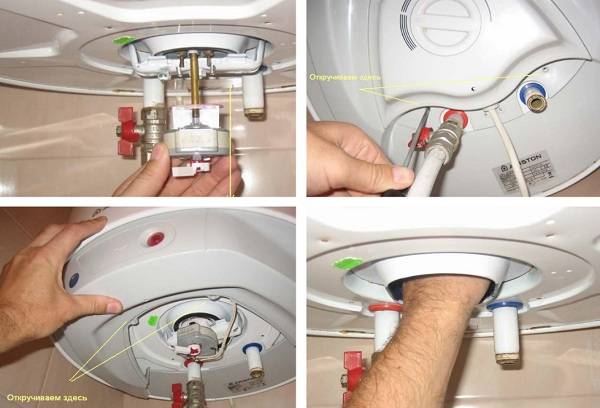

The water drain algorithm always looks like this:
- Disconnect the device from the network and turn off the water supply tap (on the pipe).
- We turn off the tap, which is responsible for supplying cold water, located near the heater. After that, we start up the water on the nearest mixer so that the glass is hot.
- We attach a tube to the drain fitting, direct it to the sewer, drain the water by opening the tap.
In the absence of taps and fittings, all liquid can be drained through the safety valve. The main thing is to act carefully and consistently so as not to burn yourself and not to provoke an accident.
Necessary tools and tools
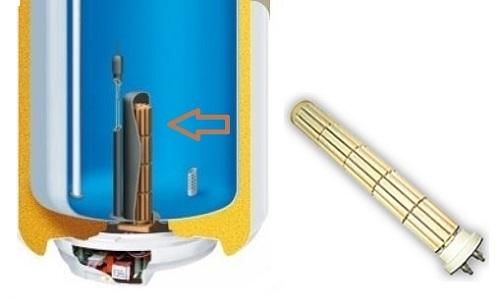

Boiler with dry heating element
A boiler with a "dry" heating element is easier to clean - it will be enough to clean the tank, since the heating element itself is isolated from direct contact with water. Constructions with a conventional heating element, in principle, are cleaned the same time, but sometimes it is better to disassemble the boiler and remove the heating element in order to better clean it.
At home, it is easier to act according to a method that does not require disassembling the water heater. For this, it is recommended to use a weak acid (citric or acetic). The cleaning process is carried out in several stages:
- Connect the hose to the branching unit and clamp it with a clamp for a snug fit. In this case, the hot water valve should not be closed.
- Drain some of the water from the tank by closing the valve through which water is supplied to the tank. In large boilers (100 liters or more), 30% of the liquid is drained.
- Make a solution of citric acid in hot water at the rate of 250 g per 1 liter.
- Pour the solution into the tank through the hose. For this, it is convenient to use a watering can or funnel. In order for the water to flow easily from the watering can into the tank, it must be located above the water level in the tank (according to the principle of communicating vessels). Water drainage taps must be closed.
- After that, open the cold water valve to fill the tank and connect the boiler to the electrical network.
- The boiler starts to work. After he heats the water to the set temperature, he must be left for several hours so that the liquid dissolves the scale.
- After that, it is necessary to empty the tank and refill it, and then empty it again. Repeat this procedure 2-3 times.
If after a short period of time the boiler starts to operate as it did before cleaning, it may be necessary to replace the magnesium anode. The fact is that it is designed to minimize the appearance of rust and scale, as it pulls cations onto itself so that the heating elements and tank walls do not deteriorate for a long time. But over time, of course, it itself becomes unusable and ceases to fulfill its immediate function. After replacing it, the device will work normally again.
If it is not possible to clean the structure yourself, it is recommended to call a specialist.
It is better to clean the flow-through water heater chemically. Disassembly is not required. To do this, you need to disconnect it from the network and pour the same solution through the tube as in the boiler. Taking into account the fact that plaque settles in pipes more slowly, its layer will be smaller, and the pipes will be cleaned faster. The reservoir of the flow-through structure itself is also smaller, so it will be enough to interrupt its operation for only 2-3 hours. After that, it is recommended to drain as much water as possible so that all dissolved sediment flows out of the pipes.
When to clean the water heater
Interruptions in the operation of a water heater begin 2-3 years after the start of its operation. The heating element located in the storage boiler is covered with a layer of lime that increases in thickness day by day.
The following signs also indicate the need for cleaning:
- increased heating time and, accordingly, power consumption;
- the device emits uncharacteristic extraneous sounds, most often hiss of varying volume;
- the water has acquired a yellowish tint;
- a characteristic hydrogen sulfide smell emanates from the water;
- yellowish flakes are visible in the water - pieces of scale;
- the outer walls of the tank began to overheat.
If the water in the apartment has a hardness of more than 350 mg / l, it is recommended to clean the heater annually. In some areas, the water is so hard that scale accumulates on the heating element in 5–6 months, and it must be cleaned.
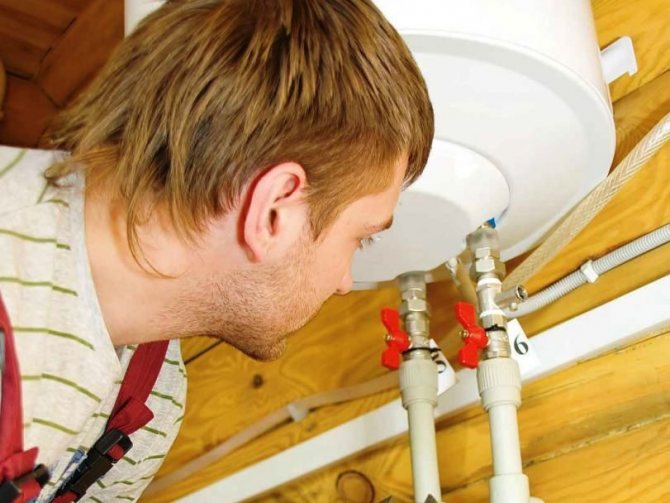

Removing the flange
The heating element is attached in different ways, depending on the manufacturer. In Ariston boilers, you need to unscrew the fastening nut with a 13 key and remove a small metal corner. The cover with the heating element must first be inserted inside the tank. If this cannot be done easily, you need to knock and loosen the lid. The heating element inside the boiler is turned over and taken out sideways, since it is bent.
We recommend: Is it possible to wash a meat grinder in a dishwasher, how to restore its shine
In some models of Ariston water heaters, the heating element is unscrewed counterclockwise (how to disassemble an Ariston water heater to change the heating element, read this article). This is indicated by the key edges on the brass part of the flange. In firms Termeks and Atlantik it is necessary to unscrew the nuts around the circumference and remove the fastening washer. Then the flange is pulled down.
It is important to carefully pull out the flange as the coil may be too much scaled up. The heating element is removed carefully and slowly with shaking movements.
Draining water from the boiler
Before you start cleaning the device, you need to drain all the water from it. This is the most important rule that must be followed unquestioningly before starting repair and cleaning work.
If the boiler is located above the bathtub or sink, then this position of the device makes it much easier to drain the water. You do not have to select a suitable container, install it. And the spray will be several times less. However, not all devices make it easy to drain water, even with the above conditions.
If the heating element is screwed into the tank, then the drain will be easy. But there are some models in which, before getting to the stage of draining the liquid, you will have to unscrew a few nuts.
With the correct installation and connection of the boiler, there should be no problems immediately after the purchase. Need to act in a certain way.
- Disconnect the power supply from the device, turn off the main water supply tap. Do the same with the tap located next to the water heater.
- Open hot water on a nearby mixer and wait until it is completely drained.
- Put a hose on the drain nipple and direct it to the drain hole to drain the water.
If there are no drains and taps, the water is drained through the safety valve. But this is a very long process. Therefore, you should first wait for the liquid to cool completely.
The absence of a union is due to the need to drain by dismantling the hot pipe and completely disconnecting it from the water heater. After unscrewing the safety valve, air will enter the boiler, pushing the water out.
This method will solve the problem of quickly draining water from the device.
Outcome
As you can see from the above, it is quite easy to independently get rid of scale inside the water heater. Easy disassembly with a minimum of tools and cheap professional cleaning products are available to everyone. To do all the work, you can call a friend or neighbor.
The boiler itself weighs a little without liquid, but with wet hands it is quite difficult to hold the volumetric structure. Any damage to the flask, even minor damage, will subsequently turn into a leak. The basic rule, which must be followed unquestioningly, is not to use screwdrivers, knives or micronized sandpaper to remove scale.
What's more, regular cleaning will get rid of the unpleasant smell from the faucet, which increases as the temperature of the water rises. This manifestation is associated not only with the accumulating dirt inside the sealed space, but also with the development of bacteria that can harm adults and children.
Article Rating
Assembling the heater
The assembly must be performed in the reverse order to achieve operability, in case your device has lost functionality, then you did the assembly incorrectly. Consider the rubber part; there should be no cracks, plaque or other damage on it, if any, it is imperative to replace it. The rest of the rubber parts must be coated with sealant to protect the boiler from leaks. Next, we fix the electric heating element in its original place, do not forget to screw in the grounding and connect all the contacts back.
Fill the tank by first opening the hot water tap and then cold water. After the boiler is filled, check its tightness, whether there is any water leakage somewhere. If everything is ok, finish the assembly - connect the thermostat, connect the panel, screw the cover. The cleaning procedure is complete, you can turn on the power supply. The boiler is ready for use.
How to drain water from a boiler: instructions
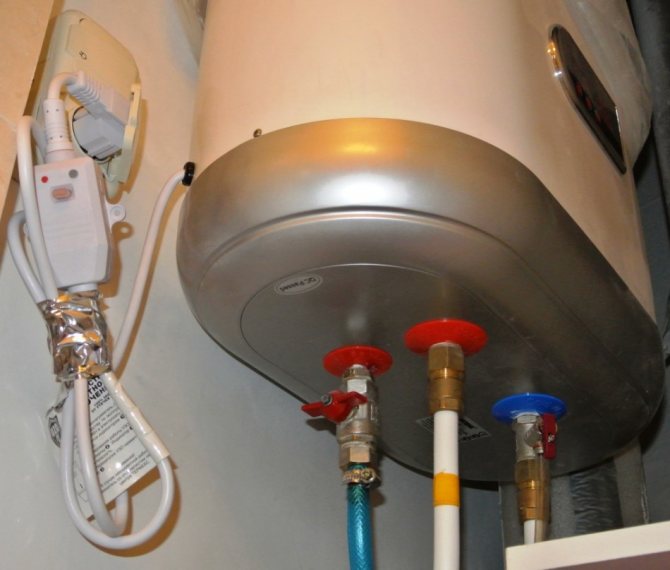

Boiler water supply taps
Disassembling and cleaning the electric tank is not difficult work, but the device itself is heavy.Therefore, it is better to remove it with another person who will help and support the device during dismantling. Here are instructions on how to drain the water from the boiler:
- Disconnect the device from the mains, remove the plug from the socket.
- Disconnect the cold water hose from the water pipe and lower it into any container (basin, bath, and so on). The hot water pipe does not need to be touched.
- Put the hose that you removed over the safety valve. Dip the free part of the hose into a container.
- Open the taps of the device, and release the check valve fuse.
- Open the hot water taps in the bathroom and kitchen. First, you will hear a sound as if the tank is drawing in air, and then the liquid that was in the device will be ejected. For this, it was necessary to lower the hoses into the container.
- After all the liquid has drained out, blow out the cold water hose with air. If there is no gurgling, you can continue on.
Recommended: Choosing an ironing board for a steam generator
Now unscrew the hose that supplies hot water to the mixer. Remove the boiler from its place and place it on the floor with the taps up. Proceed to the next step of dismantling.
How to clean a water heater
There are two recipes for descaling a water heater. These methods are fundamentally different in their principle of operation. The scale in the water heater is removed:
- by mechanical action (cleaning the water heater tank from scale with a solid object);
- with the help of chemicals added to the water in the tank.
Each of these methods has advantages and disadvantages. The first one is very laborious, since the descaling of the water heater takes place in manual mode, and the surface area of the tank is solid. In addition, before you clean the water heater from scale, you will have to work hard, almost completely disassembling the structure. Any careless movement can damage the surface of the tank. When it comes to using the device for commercial purposes, then during the downtime that it takes to descale the water heater, more is lost than even the cost of cleaning.
Less resource-intensive dry cleaning process. An advantageous feature of the method is the absence of the need to completely disassemble the device before cleaning the water heater from scale. The risk is that overexposure can damage the material of the tank and the heater with reagents, and an insufficiently prolonged exposure will not lead to the desired result, since it will not be possible to completely remove scale in the water heater.
This method consists in the fact that water-soluble reagents are added to the water, which, under the influence of temperature, react with the salts of the sediment and form new compounds that easily dissolve in water and are excreted naturally. Since there is no need to disassemble the equipment, it is much easier to rinse the water heater from scale.
How to flush an instantaneous water heater:
- acetic acid;
- lemon acid;
- adipic acid (most often used in manufacturing and in household products to combat scale in a water heater).
Mechanical method
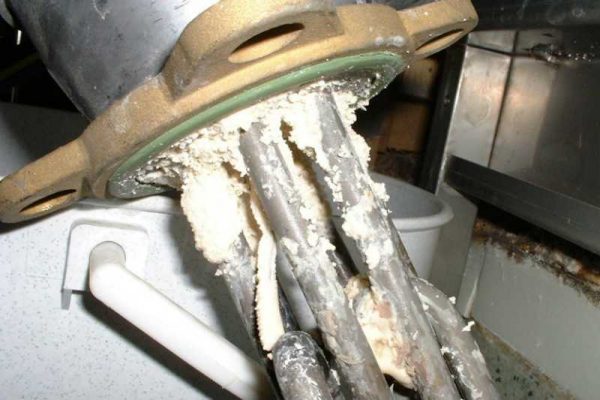

The solution to the problem (how to clean the boiler mechanically) conditionally consists of the following steps:
- disconnecting the device from voltage;
- removing water from the tank. Turn off the general water supply valve and the valve supplying water to the tank. Put a hose on the drain fitting, drain the water into the sink, toilet.
- Cleaning the heating element. After removing the water, dismantle the tank pan by unscrewing the fastening screws. We remove the control board by freeing the wires. We remove the teng from the tank. Depending on the model of the water heater, the sequence of actions is adjusted. It is better to take step-by-step photographs of disassembly in order to then assemble the device in the correct sequence.We perform mechanical cleaning of the heating element immediately, while the lime crust is wet, using a metal brush, a knife, and a wooden spatula. Finish cleaning with emery cloth. It must be remembered that the degree of its heat transfer depends on the quality of cleaning the heating element.
- Cleaning the inner walls of the boiler. To remove scale from the inside of the boiler, you just need to gently wipe the walls with a damp cloth. It is unacceptable to use abrasive products in order to avoid damage to the inner enamel coating. Actually, this point is controversial. Professionals claim that the lime-salt layer on the walls of the tank protects the metal from corrosion, serving as additional thermal insulation for the hot water in the tank.
- Assembly and connection. Reassemble the device in reverse order. All electrical wiring must be dry. It is imperative to check the tank for leaks - fill it partially with water, observe it for a day. If the leaks are not fixed, you can fill the water heater completely with water, connect it to the network.
Step-by-step methods for cleaning a water heater
It is quite possible to descale the boiler yourself. At first glance, it is a rather difficult process that requires basic skills in disassembling and assembling equipment. We will describe step by step what you need to do with the highest quality, accurately, so that even with a lack of experience, they do the work better than professionals.
Before starting work, you need to make sure that you have all the necessary tools for further work:
- screwdrivers of different shapes;
- wrench;
- sandpaper;
- necessary disinfectants, cleaning agents.
Be sure to disconnect the water heater from the network. The device is disconnected from the socket, we continue to work quietly. It is advisable to use all the hot water in the vessel before cleaning. It will be convenient when the device is located directly above the bathtub, then additional fuss of draining the water is not required. In another situation, it is worth following a few simple steps:
- turn off the cold water supply using the inlet tap;
- the cold valve located next to the water heater is twisted;
- the hot valve on the mixer opens, part of the water flows out on its own;
- In the drainage connection, the remaining water is sent to the sewer.
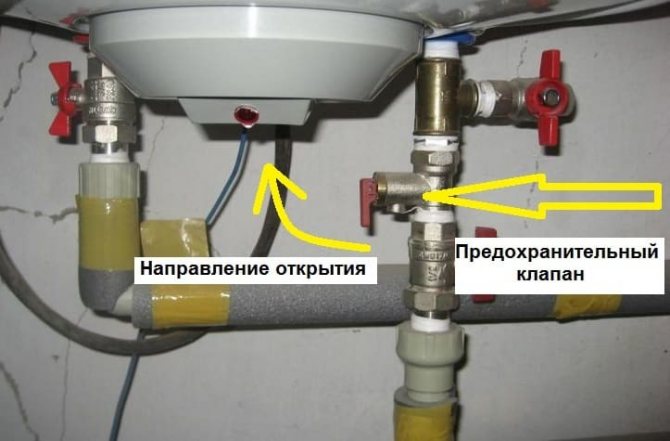

If the mechanism does not have a fluid drain pipe, it is necessary to drain the water through an additional valve. You need to put a bucket under the device, you can have another depth, then drain the water. Gently twist the valve, wait for the moment to drain the water. Open the tap at the same time, wait until the remaining hot water comes out. Air will be sucked in from the opening of the tee, it will help to completely drain the water. A very slow process that requires a lot of time and patience. It is also possible to connect a drain valve for convenience, speed of the work performed.
Then, after draining all the water, close the mixer, the drain valve. Unscrew, slowly remove the plastic casing from the bottom of the water heater. Disconnect the heating indication light from thermoregulation. We also immediately disconnect the electrical wires and ground wires. We remove the thermostat, pull it down from the plugs. We unscrew the five nuts of the heating element flange bolts. Gently bend the surface, get access to the rubber cuff, which we slowly tighten, gradually pull the heating element down.
After removing the heater, part of the stone remains inside the tank of the device, part of it accumulates in the heating element itself. We carefully clean the inside of the boiler, during the manipulation without touching the spring with the tip, which is located in the inside of the open structure. We open the water pressure a little, clean the tank well from the inside. The process is fast enough. We clean the heating element from the stone in two well-known ways - chemical and mechanical.


Mechanical
The heating element is in your hands, there is another opportunity to assess the quality of the water liquid of your pipes. There is no need to wait for the stone to dry. It is better to quickly get rid of scale in the water heater with improvised means. You can use a stiff toothbrush to gently remove the wet scale from the device. If you don't have the right brush at hand, you can use an ordinary wooden stick, knife, spatula. At the end of cleaning, use sandpaper to make it more clean, the further quality of the device, the amount of energy used, will depend on this.
Chemical
The chemical method is more efficient and less energy consuming. Take a container slightly deeper than the heater itself (there is an option to use a cut plastic bottle) and any descaler. There is no need to buy something on purpose, it is worth using the same tools used to clean the kettle, any other device. We also add acetic acid to the heated water, then place the heater there. The work must be done carefully, without damaging the rubber part of the internal structure. Whether or not to descale the other part of the boiler is up to you. The main task is to clean the heating element, which is the core of the entire structure.
When the work is done, it will be necessary to thoroughly dry all the parts before reassembling, to make sure that they have taken their original places. An important factor, such as the fact that a day after the cleaning time, the boiler should not be left without proper attention. It is necessary to carefully monitor its operation, make sure that no important parts are touched or damaged, the device works smoothly.
Remember, descaling the boiler is one of the most important moments in the operation of the water heater. Not one, even the most expensive boiler will not last long in the absence of proper care. Therefore, disinfect all equipment in a timely manner, carefully monitor its operation, the quality of the incoming water.
Tips for disassembling the structure and cleaning the wet heating element
Before cleaning the boiler begins, the device must be disassembled by pulling out the heating element. To do this, first remove the decorative plate that covers the contacts and the place where the element is attached. It can be screwed on or latched on. Having reached the internal elements, it is recommended to photograph them so that there are no problems with the subsequent recovery of the system.
We disconnect all contacts, after which we take out the heating element. If the device has not been descaled for a long time, proceed very carefully. Accumulated dirt may prevent the heating element from being easily removed. You do not need to pull it, it is better to try to carefully clean the deposits.


Tip: Having reached the insides of the structure, it is recommended to assess the condition of the magnesium anode. If it is severely thinned, then it should be replaced without waiting for the element to fail.
In most cases, scale layers are collected on the tubular part, and there is not much of it inside the tank. It is enough to turn on the water to wash everything unnecessary from the boiler itself. If you cannot clean the boiler in this way, you will have to work with your hands. The main thing is not to try to facilitate the process by using aggressive abrasives. You need to use only proven safe means.
To clean the heating element itself from the scale layer, it is necessary to carry out the following manipulations:
- We clean off the main part of the dirt mechanically using a knife or something similar.
- Next, dilute citric acid in a tall glass made from a plastic bottle (just cut off the neck). For 2 standard sachets of powder, about 2 liters of warm water.
- We place the heating element in this structure for at least a day. This time will be enough for all the dirt to come off, and the heating element returns to its original form.
We recommend: How to descale a humidifier
After carrying out these manipulations, you can assemble the boiler, test it and subject it to further operation.
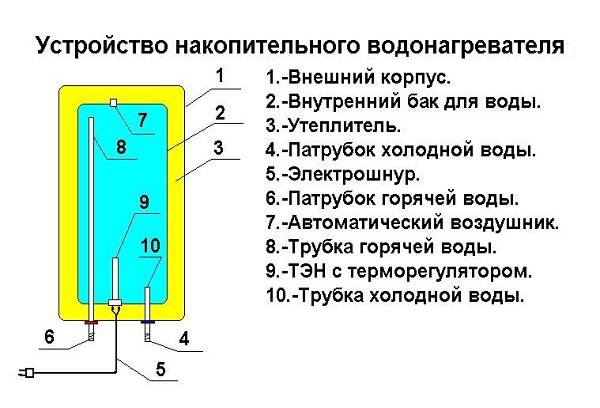

Where does the scale in the water heater come from?
Before we tell you how to descale a water heater, let us clarify that this phenomenon is inevitable in devices with a tank. And therefore, skimping on timely cleaning of the water heater from scale is not worth it.
Solid deposits in containers are formed on all metal surfaces during the heating of tap water, which, as a rule, is replete with a variety of salt impurities. It is they that break down into gas and solid insoluble sediment that covers the entire surface of the tank.
Cleaning products
You can remove scale from the heating element of the water heater using improvised and professional chemicals.
Folk
Some substances that every housewife has at hand can dissolve scale and restore the operation of the boiler:
- Vinegar. 5 tablespoons of vinegar (9%!) Or 2 teaspoons of the essence are diluted in a liter of water.
- Citric acid - 50 grams per liter of water.
Professional
All products contain acidic and alkaline components that can completely remove scale, rust and other contaminants from the heating element.
The following preparations are most popular for cleaning the boiler:
- Filtero;
- Topperr 3031;
- Bagi Kumkumit;
- Melon ZhS17;
- Silith;
- Eon Bio;
- Bagi Shumanit;
- Solita;
- Boiler Master.
The selected chemical should be used strictly according to the instructions. Before use, an aqueous solution is prepared from them. Violation of the concentration of the highly acidic solution and the time of its exposure will lead to the failure of the boiler.
Example of cleaning a water heater
For clarity, I will describe how I cleaned my Electrolux EWH 50 AXIOmatic Slim boiler. With the first cleaning, I tightened it up and did it only after a year and a half. From this cleaning, it was concluded that in my case, the boiler needs to be cleaned annually.
Cleaning example
Since my boiler is located in the toilet, it is unrealistic to disassemble and flush it at the installation site. Therefore, I took it off and did the disassembly on the floor.
In an upside-down position, I removed the cover and photographed the connection. Then he removed the electrical equipment and the heating element. The element itself turned out to be covered with a thick layer of scale, and a porridge from scale was collected inside the tank. There was no rust and dirt. Obviously, the mechanical filter installed in front of the boiler helped.
The hardest part was holding the boiler over the tub while flushing. To do this, it took a second person to rinse the tank out of the shower head.
I cleaned the heating element and the anode as described above. I did not buy a new one, since the old one was almost never used up. My boiler uses an M6 threaded anode with a length of 10 mm.
Thanks to the photographs, I assembled the boiler successfully, although I had never disassembled and assembled it before. Nothing leaked and everything worked the first time. Therefore, I can say that everyone can do the cleaning of the boiler.
Apart from the time spent on heating the heating element in citric acid, it took me several hours to complete this work. A lot of time was spent looking for information, how to do the cleaning correctly, and photos for the article. Next time, I expect to do it in a couple of hours.
Draining
Water draining takes place in several main stages:
- We close the water supply valve in the apartment.
- The easiest way is to drain the water from the water heater through a non-return valve. To do this, we connect a hose to it, send the other end to the bathroom or toilet and open the valve. You can simply substitute a bucket from below and pour water out of it from time to time.
The disadvantage of this method is the long drainage time.It can take up to 4 hours to drain 100 liters of water from the boiler through the valve. - You can drain the water faster by unscrewing the water outlet from the boiler and removing the valve. After that, a hose is connected to the outlet from the water heater and the branch pipe is gradually unscrewed from the inlet to the boiler. Thus, air can enter the tank, and the water will drain out in a few minutes.
Limescale, which is located at the bottom of the tank, can interfere with the discharge of water. In this case, you need to move it to the side by thrusting a screwdriver into the hole from which water is pouring.
Boiler assembly
The heating element, cleaned of scale, is pushed back into the tank and fixed. Water pipes, check valve and electrical wires are connected. It is important to make sure that the tank is filled with water before plugging in the water heater. Otherwise, the heating element can burn out very quickly.
In order for the water to accumulate, we turn on the valves for inlet and outlet of water from the boiler and a hot water tap. First, air will come out of it and liquid will flow over time. The boiler and pipe connections are inspected for leaks (how to fix a leak in the boiler, read this article) and then the protective cover is put in place.
When should you clean?
Before you start cleaning a water heating unit of any brand - "Atlantic", "Oasis" or another - it is worth analyzing the operation of the product, listening to the noise and checking the quality of water heating.
The main "bells" signaling that it is time to clean the product are the following factors:
- water heats up for a very long time;
- her temperature has changed - it has become too hot, or vice versa;
- the amount of electricity consumed by the boiler increased, and the meter began to wind off kilowatts many times faster after starting the device;
- overheating of the storage tank;
- in case of frequent switching on and off of the device;
- if a hissing sound is heard from the boiler while heating the water.
Choice of funds
Cleaning the boiler, for example, Ariston, will be much more effective with the availability of special equipment. Visit a household chemicals store, where you will definitely find a product for cleaning. Just do not forget to find out if this tool is right for you, because some chemical reagents may not be suitable, for example, to a rubber seal, they can ruin it.
As mentioned earlier, a good cleansing result is obtained when using a saturated solution of citric acid (sold in sachets). To use it, take half a kilogram of the substance and dissolve it in 2 liters of water (preheat it so that the acid is completely dissolved).
Mechanical cleaning of the water heater of the device with disassembly
If it is heavily soiled, descaling the boiler can only be done mechanically. The water heater will have to be disassembled. They do this carefully so as not to damage the electronic unit and the heating element, otherwise there is a threat of a short circuit. The process consists of two stages: cleaning the heating element and the storage tank of the water heater.
To clean the device from scale mechanically, you will need to dismantle the water heater. Having disconnected the device from the network, proceed to disassembly:
- first close the cold water supply tap, then disconnect the pipeline from the boiler fitting;
- through a mixer or an additional drain valve, empty the storage tank;
- disconnect the DHW pipeline from the boiler fitting;
- remove the lower decorative cap by unscrewing all the screws;
- if the handle of the mechanical thermostat protrudes, it is also removed;
- use a screwdriver to unscrew the contacts clamping the power wire;
- the boiler is removed from the wall and placed upside down in the bath;
- the flange with the heating element and the thermostat are unscrewed, removed from the tank, after which they proceed to mechanical cleaning.
The procedure for disassembling boilers of all firms is practically the same. Some details of the flange and decorative cap attachment may differ.
Cleaning products and tools
To clean the water heater from scale, you will need tools:
- adjustable and a set of wrenches;
- straight and curly screwdriver;
- pliers;
- knife, sandpaper.
Descaling agents are purchased at the store. The solution is prepared independently from citric acid by dissolving 500 g of crystals in 2 liters of water. Instead of citric acid, you can dilute 40 ml of vinegar in the same amount of water.
Commercial cleaning products can destroy the rubber seals on the boiler. Before using the solution, you must carefully study the instructions on the package.
Heating element cleaning
At the first disassembly, a person does not know how to clean the heating element of the water heater so as not to damage it. In the work, you will need to be careful. You need to know that the heating element of a water heater is of a wet and dry type and they are cleaned in two ways.
Wet heating element
You can mechanically descale the heater by scraping it with a knife. Thick growths are crushed with pliers, and the remains are rubbed with sandpaper. You cannot overdo it so as not to break the copper sheath of the heating element.
If you feel unsure, place the heater in a cut-off plastic bottle filled with a citric acid solution of water. Approximately 5–6 hours after complete dissolution of the scale, the heating element is removed and washed with clean water.
Dry heating element
Dry heating elements are handled with care. It is impossible to scrape, break and rub hard accumulations with sandpaper. Dry heating elements are cleaned only by a chemical method, immersed in a citric acid solution or a factory-made cleaning agent.
While cleaning the heater, inspect the magnesium anode. If it has worn out and become thin, then a replacement is performed.
Cleaning the storage tank
In order to remove dirt or scale from the walls of the storage tank of the water heater, do not use rough influence. Sandpaper or scrapers will damage the protective coating. The mucus is simply flushed out with a soft sponge, pumping water under pressure from the shower head.
If there is a thick layer of limescale on the tank walls, use a factory-made cleaning solution. Citric acid or vinegar diluted with water will do. The water heater tank is filled with a solution and left overnight. In the morning, the liquid with the fallen off plaque is drained. The tank is rinsed with clean water.
Reassembling the boiler after cleaning
At the end of the disassembly cleaning, the water heater is reassembled. All actions are performed in reverse order:
- the thermostat with heating element is put in its place and the flange is screwed on;
- the boiler is hung on the wall;
- the cold water and hot water supply pipes are connected to the branch pipes;
- the storage tank is filled with water and tested under pressure for leakage;
- if the test is successful, connect the electrical cable, put the decorative cap in place, and then try to heat the water.
When reassembling the water heater, it is important to carefully inspect the rubber gaskets. They are well cleaned of dirt, but it is better to buy new ones. To avoid leaks, the gaskets are lubricated with sealant.

